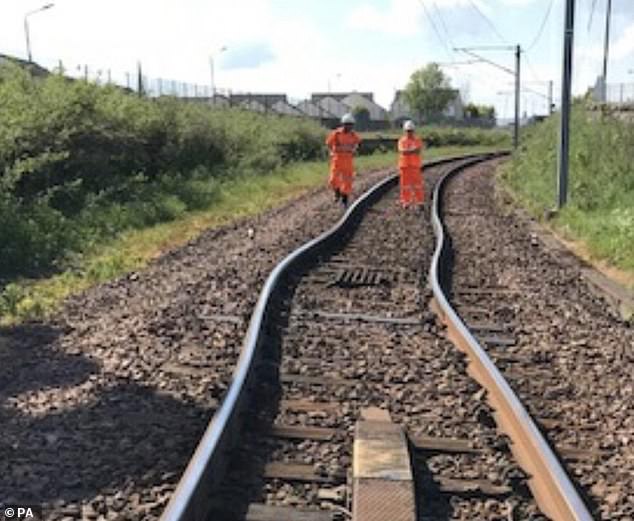
Extreme Heat Halts UK Trains: Experts Reveal Heatwave Impact on Rail Networks
UK Heatwave Halts Trains: Why Rails Buckle in Extreme Heat
[Image: Crowded station with delayed departures]
Caption: Passengers stranded amid widespread rail cancellations.
As the UK faces soaring temperatures, its rail network has struggled to cope, with delays and cancellations sparking frustration. Social media erupted as commuters shared images of packed stations, while astronaut Tim Peake quipped on X: “We built a space station enduring ±140°C swings, yet UK trains fail at 30°C.”
Why Do Rails Fail in Heat?
Network Rail explains that steel tracks expand under heat, risking dangerous warping called “buckling.” While rails can handle up to 46°C (track temperature), the current heatwave—with air temperatures hitting 32°C—pushes some sections beyond limits. Direct sunlight can heat rails 20°C above ambient air, causing them to bend and forcing closures for repairs.
[Image: Buckled rail at Wishaw, 2018]
Caption: Extreme heat can warp tracks, as seen in Scotland in 2018.
Preventive Measures
Network Rail uses sensors to monitor track temps. If risks rise, speed restrictions are imposed to reduce stress on rails. However, buckling still occurs, requiring shutdowns until tracks cool. Aging infrastructure compounds the problem, though some solutions are in place:
- White Paint: Coating rails reflects sunlight, lowering temps by 5°C. Italy uses similar methods.
- Modern Overhead Wires: Updated auto-tensioned systems, like those on Greater Anglia lines, prevent sagging in heat.
- Concrete Slabs: Some tracks are laid on concrete instead of ballast, a technique common in hotter countries. However, this costs four times more.
[Image: Workers inspecting overhead wires]
Caption: Overhead wires, prone to sagging, are being upgraded for heat resistance.
Overhead Line Risks
Heat also affects power lines. Older wires expand and droop, potentially tangling with train pantographs. Modern systems mitigate this, but repairs during heatwaves cause delays.
Climate Change Concerns
With heatwaves predicted to intensify, Network Rail is planning long-term adaptations. “We’re preparing for projected climate changes,” they stated, though challenges remain for the 20,000-mile network.
[Image: Technician painting rails white]
Caption: Painting rails white helps reflect heat, a cost-effective preventive measure.
Passenger Frustrations
Travelers criticized the delays, contrasting the UK’s response with countries like Spain or Italy, where rails handle higher temps routinely. Experts note that while the UK’s milder climate historically didn’t warrant expensive heat-proofing, rising temperatures may force investment.
As summers grow hotter, the race to future-proof Britain’s railways is on—but for now, passengers face sweltering waits.
Final Image: Graph showing rising UK temps and rail disruption trends.
Caption: Climate data predicts more frequent heat-related transport issues.
(Word count: ~600)


